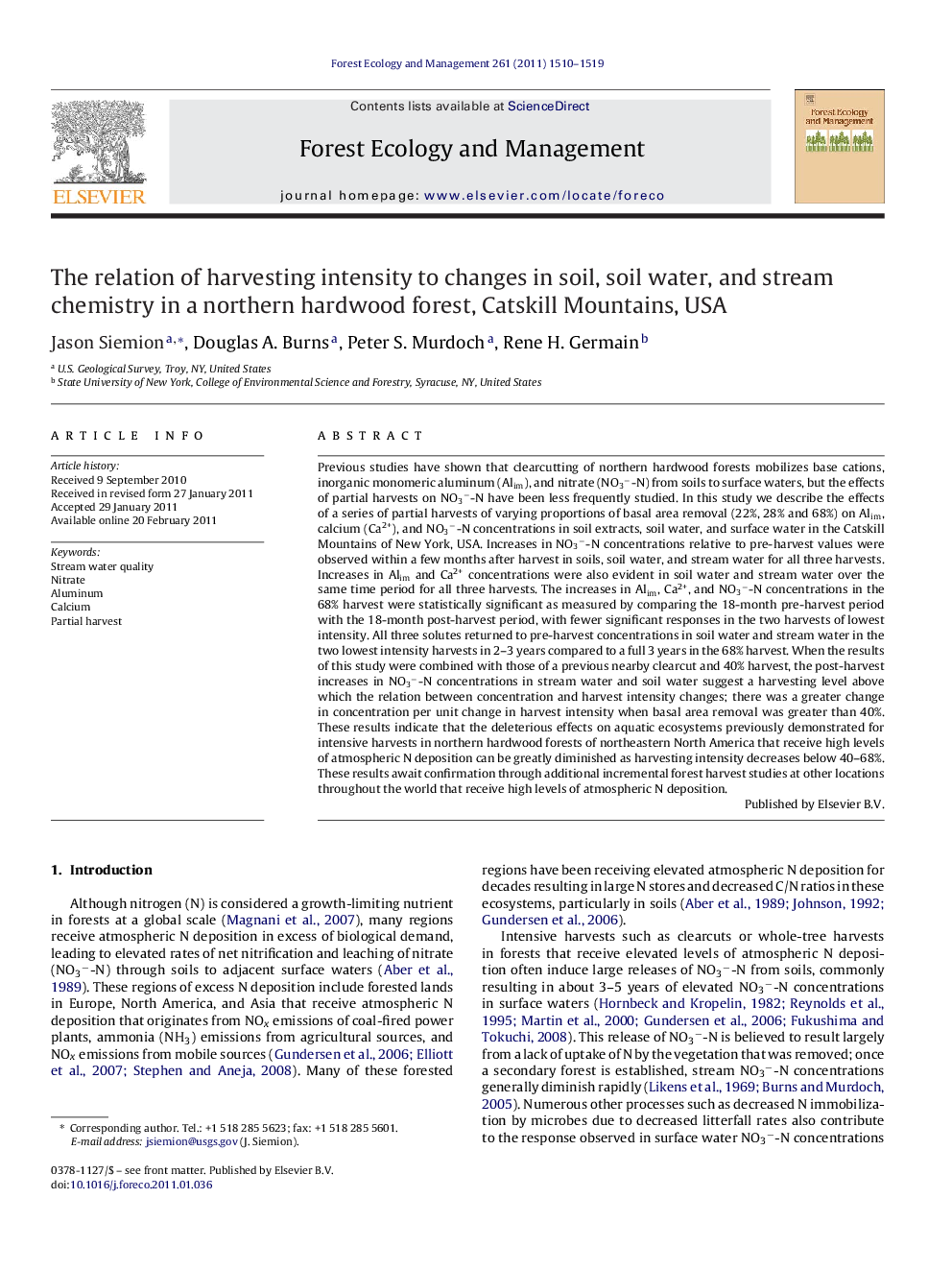| کد مقاله | کد نشریه | سال انتشار | مقاله انگلیسی | نسخه تمام متن |
|---|---|---|---|---|
| 87985 | 159275 | 2011 | 10 صفحه PDF | دانلود رایگان |

Previous studies have shown that clearcutting of northern hardwood forests mobilizes base cations, inorganic monomeric aluminum (Alim), and nitrate (NO3−-N) from soils to surface waters, but the effects of partial harvests on NO3−-N have been less frequently studied. In this study we describe the effects of a series of partial harvests of varying proportions of basal area removal (22%, 28% and 68%) on Alim, calcium (Ca2+), and NO3−-N concentrations in soil extracts, soil water, and surface water in the Catskill Mountains of New York, USA. Increases in NO3−-N concentrations relative to pre-harvest values were observed within a few months after harvest in soils, soil water, and stream water for all three harvests. Increases in Alim and Ca2+ concentrations were also evident in soil water and stream water over the same time period for all three harvests. The increases in Alim, Ca2+, and NO3−-N concentrations in the 68% harvest were statistically significant as measured by comparing the 18-month pre-harvest period with the 18-month post-harvest period, with fewer significant responses in the two harvests of lowest intensity. All three solutes returned to pre-harvest concentrations in soil water and stream water in the two lowest intensity harvests in 2–3 years compared to a full 3 years in the 68% harvest. When the results of this study were combined with those of a previous nearby clearcut and 40% harvest, the post-harvest increases in NO3−-N concentrations in stream water and soil water suggest a harvesting level above which the relation between concentration and harvest intensity changes; there was a greater change in concentration per unit change in harvest intensity when basal area removal was greater than 40%. These results indicate that the deleterious effects on aquatic ecosystems previously demonstrated for intensive harvests in northern hardwood forests of northeastern North America that receive high levels of atmospheric N deposition can be greatly diminished as harvesting intensity decreases below 40–68%. These results await confirmation through additional incremental forest harvest studies at other locations throughout the world that receive high levels of atmospheric N deposition.
Research highlights
► Basal area removal of greater than 40% may lead to negative effects on the forest ecosystem.
► Above 40% basal area removal stream water NO3− concentrations increased substantially.
► Increased basal area removal leads to longer periods of elevated chemical concentrations in streams.
Journal: Forest Ecology and Management - Volume 261, Issue 9, 1 May 2011, Pages 1510–1519